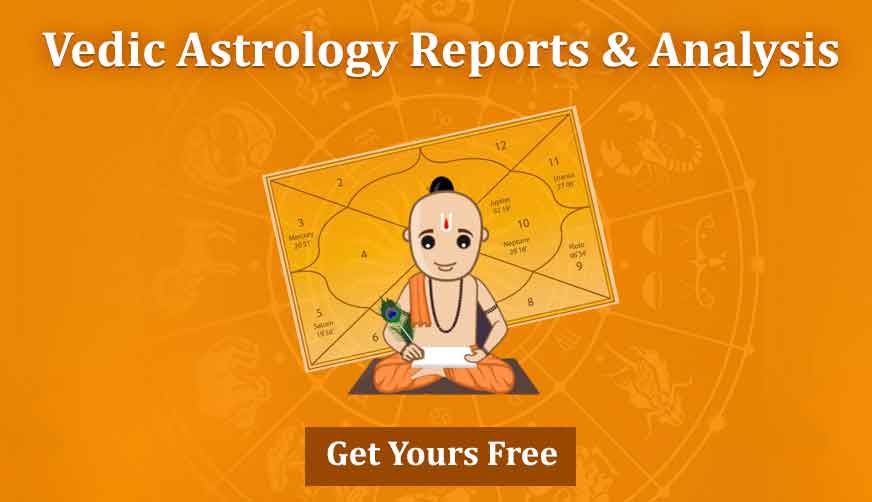Analysis of Horoscope through the Ashtakavarga Table | Different Methods of Judging the Horoscope
Analysis of the chart and making the perfect predictions requires mixing of different methods of judging the horoscope. Ashtakavarga is the system of analyzing chart with respect to 8 reference points. In general, the chart is analyzed with only one reference point i.e. the rising ascendant.
When the position of the planet is analyzed with respect to the Lagna we depict the good and bad placement of the planet. For example, Jupiter in the 9th is considered to be well placed while placement in the 3rd is considered to be bad. In the same way placement of Mars in the 3rd which is the Lagna ( rising ascendant) is considered to be good whereas placement in the 9th is considered to be bad. However, Lagna is not only the point of reference. The reference is also drawn from all the planets i.e. Sun, Moon, Mercury, Venus, Jupiter, Mars and Saturn. Based on the houses in which the different planets are placed in the transit the benefic and malefic results are drawn.
Let us suppose that the Sun is in Cancer in the horoscope. After six months, Sun will not be in cancer but will be in Sagittarius or Capricorn and in each succeeding months the Sun transits in different angular positions with respect to its original position at birth and those of the other planets.
The Ashtakavarga Table is prepared using dots and dash. To denote the benefic places in the Ashtakavarga table zero(0) i.e. dot is used. To denote the malefic places dot lines(--) dash is used. Planets in Upchaya ( 3,6,10,11) places, in friendly and own houses or exaltation signs produce benefic effects if such houses contain more benefic dots for the planets than malefic ones. When planets pass through Apchaya houses (1,2,4,5,7,8,9,12 from Lagna) or unfriendly or depression signs produce malefic effects fully. The Upchaya and Apchaya houses must be reckoned with respect to the Ascendant or Moon and not from other planetary positions.
This Ashtakvarga table can be made clear by illustrating the position of the Sun in a horoscope. The Sun is considered auspicious in the 1st, 2nd, 4th, 7th, 8th, 9th, 10th and 11th houses from himself. The same is the condition for Mars and Saturn. The Sun is auspicious in the 5th, 6th, 9th and 11th from Jupiter. The Sun is auspicious in 3rd, 6th, 10th and 11th from moon. The Sun is auspicious in 3rd, 5th, 6th, 9th, 10th, 11th and 12th houses from Mercury. The Sun is auspicious in 6th, 7th and 12th houses from Venus. The Sun is considered auspicious in 3rd, 4th, 6th, 10th, 11th and 12th. houses from asecendant. Hence, the total are 48 points.
If the Sun is placed in Cancer in the birth chart then will mark dot i.e Zero(0) in houses i.e. Cancer, Leo, Libra, Capricorn, Aquarius, Pisces, Aries, Taurus. in the remaining houses we will place dash i.e. dot line(--).
In the similar manner the tables for the Sun is drawn with reference to other planets and the Ascendant. This gives us eight tables. Now, finally the 9th table is made placing all the dots and dashes in various houses that is Aries, Taurus etc. More dots(0) in a house means more auspicious effects when Sun transits in that Rashi while more (--) means inauspicious effects during the Sun’s transits in that house.
So, Ashtakavarga system is essentially the table that illustrates the position of Lagna and seven other planets with respect to each other and depicts the good and bad results in reference to the Gochar or transitions of the planets. This can be used to analyze the strength of the Natal chart and moreover it can also be used analyze the good and bad results of transits.
To get your Horoscope, please click on this Link : Vedic Horoscope






